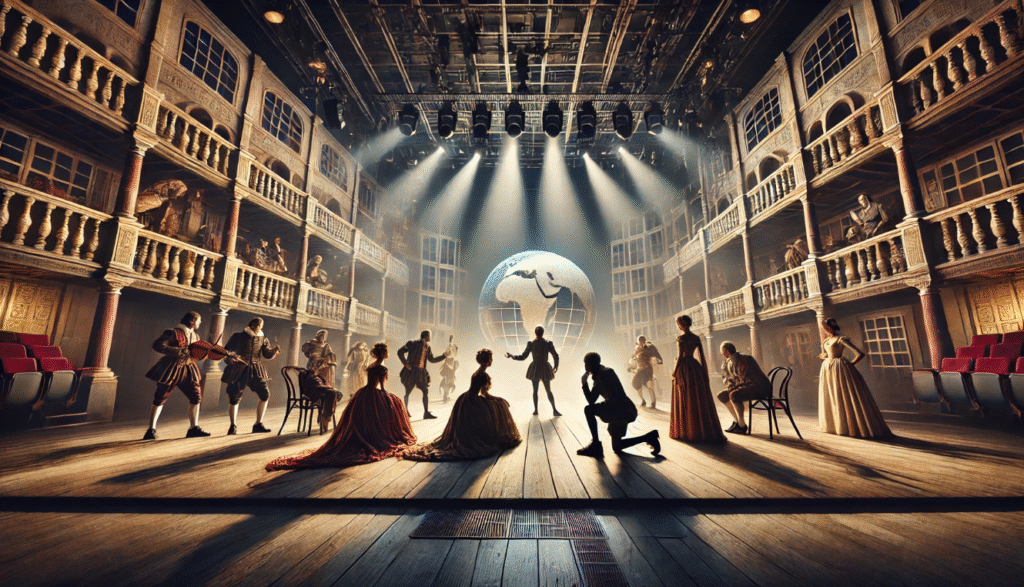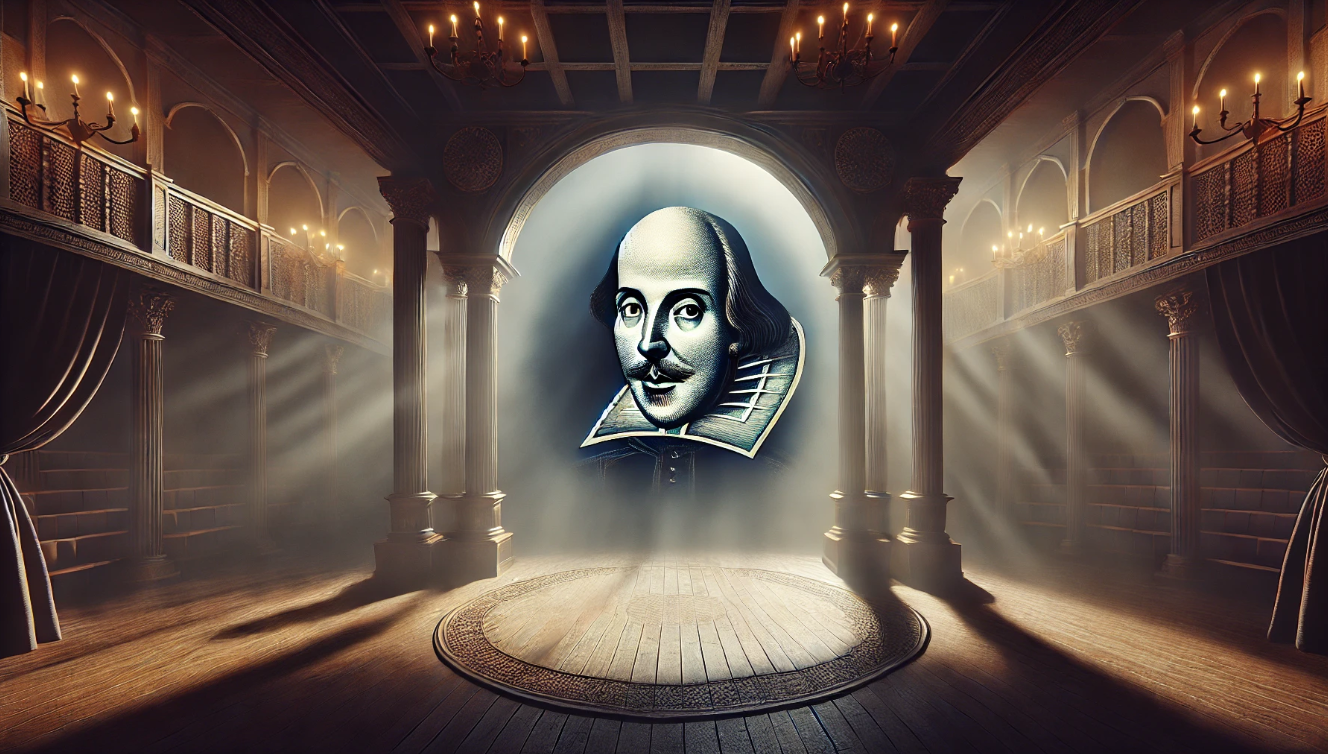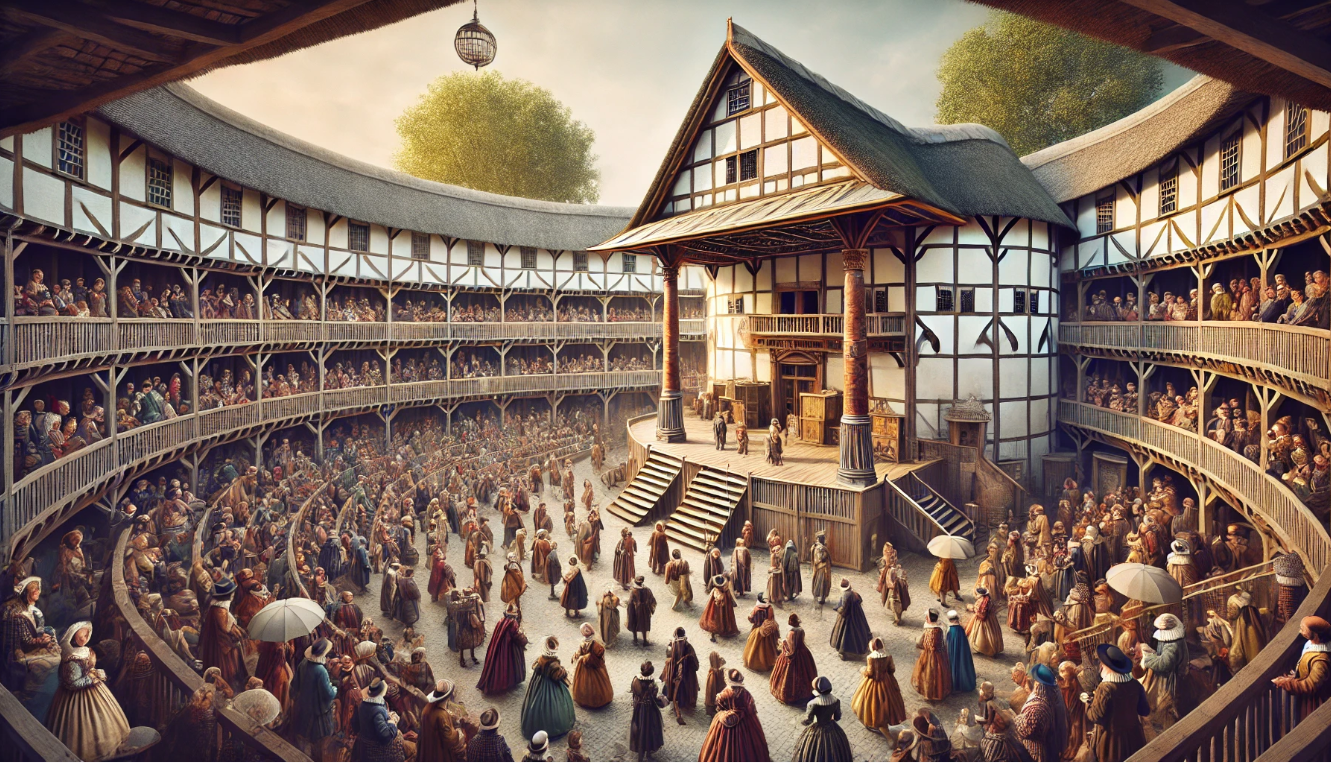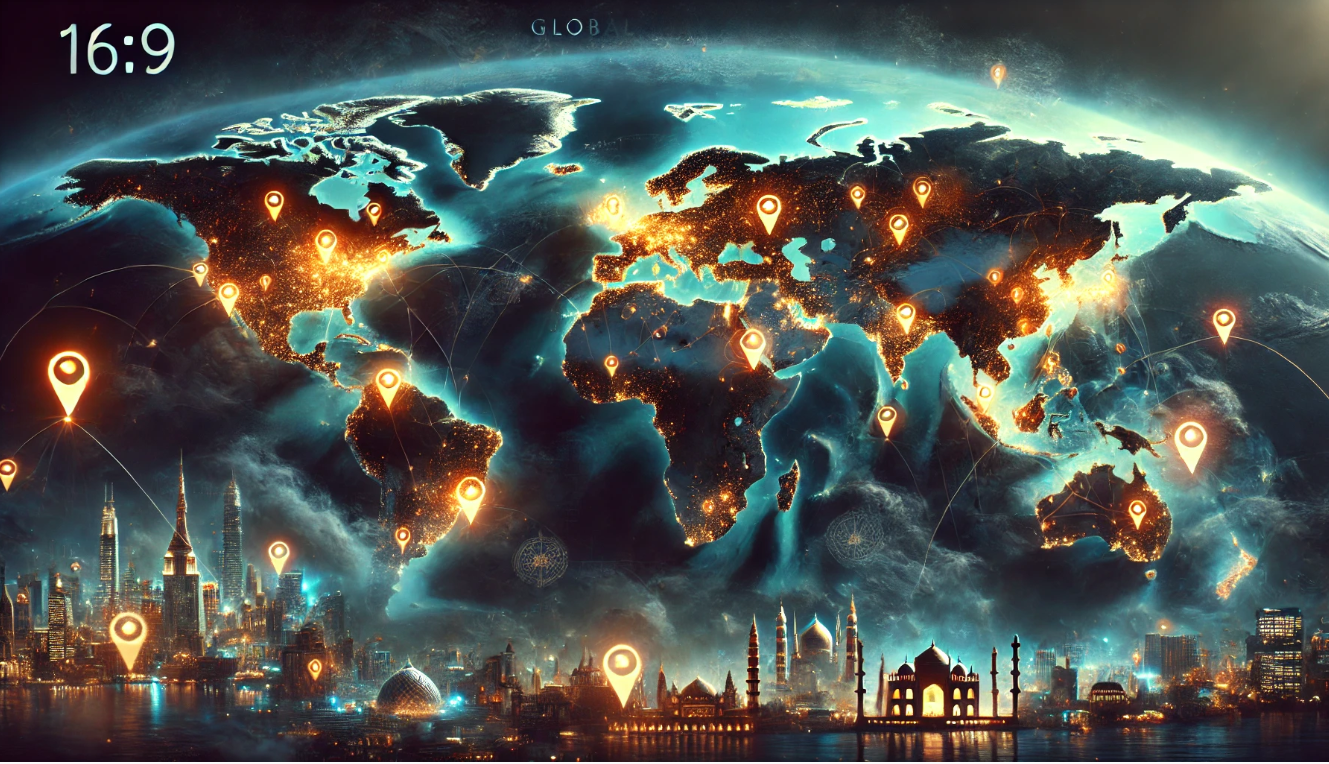
The Significance of Shakespeare’s Plays in Theatre History: How His Works Shaped Modern Theatre and Performance
Imagine stepping into a theatre centuries ago, where the stage comes alive with unforgettable characters, complex plots, and powerful emotions. This is the world Shakespeare created—a world that continues to captivate audiences today. But what is The significance of Shakespeare’s plays in theatre history? How did his work lay the foundation for the theatrical experiences we enjoy in modern performances?
Shakespeare’s influence on theatre is undeniable. His ability to weave universal themes, create intricate characters, and explore the depths of human emotion transformed the stage forever. Whether you’re a theatre enthusiast, a performer, or simply curious about how history shapes modern art, understanding the impact of Shakespeare’s work is essential. 🌟
Table of Contents
Toggle1. Understanding Shakespeare’s Lasting Influence 🎭

William Shakespeare’s impact on theatre is immeasurable. His plays have transcended centuries, influencing not just playwrights, but actors, directors, and even audiences across the world. But what exactly is the significance of Shakespeare’s plays in theatre history?
At the core of his work, Shakespeare brought depth to characters and explored themes that remain relevant to this day—love, power, betrayal, ambition, and identity. His ability to blend these universal themes with intricate plots changed how stories were told on stage. 🌟
Complex Characters and Emotional Depth
Before Shakespeare, many theatrical characters were simple, often representing virtues or vices. Shakespeare revolutionized this by creating multi-dimensional characters with complex emotions and motivations. Take Hamlet, for example. His internal struggle and moral dilemmas are as relatable today as they were in the 16th century. These well-rounded characters have paved the way for more complex roles in modern theatre and film.
Universal Themes That Endure
Shakespeare’s works tackle themes that transcend time and place. Whether it’s the tragic love story of Romeo and Juliet or the political intrigue in Macbeth, his exploration of human nature touches on experiences everyone can understand. These themes continue to be adapted and explored in modern productions across various mediums, from theatre to film to television.
Language and Expression
Shakespeare’s contribution to the English language is unmatched. He didn’t just write plays; he invented new words and phrases that are still in common use today! Words like “eyeball,” “swagger,” and “break the ice” all came from his plays. His poetic language and clever use of metaphor elevated the quality of dialogue in theatre and continue to influence how scripts are written today. 📜
In essence, Shakespeare didn’t just tell stories; he elevated the art of storytelling itself. His influence is still felt in every modern play, film, and even TV show. Whether you’re an actor, director, or theatre lover, Shakespeare’s legacy offers a blueprint for creating powerful, impactful performances that resonate with audiences, no matter the era. 🌍
2. Who Was Shakespeare? A Brief Overview 🎭
William Shakespeare is often regarded as one of the greatest writers in history, but who exactly was this literary genius, and why does he hold such a prominent place in theatre history?

A Quick Snapshot of Shakespeare’s Life
Shakespeare was born in 1564 in Stratford-upon-Avon, England. Over the course of his life, he wrote 39 plays, 154 sonnets, and a number of other poems. His work spans genres, from tragedies like Hamlet and Macbeth, to comedies such as A Midsummer Night’s Dream and Twelfth Night, and historical plays like Henry V. Shakespeare’s plays have been translated into every major language and continue to be performed all over the world today. 🌍
Shakespeare’s Impact on the English Language
Beyond his theatrical work, Shakespeare’s contributions to the English language are immense. He coined over 1,700 words and expressions that are still used today. From phrases like “break the ice” to “heart of gold,” his ability to create new terms and meanings expanded the English vocabulary and made his works even more impactful.
The Globe Theatre: Shakespeare’s Creative Home
Shakespeare’s work is closely tied to the Globe Theatre in London, where many of his plays were performed. The Globe was a hub for creativity, and its open-air design allowed for dynamic performances. It was here that Shakespeare refined his ability to captivate audiences with complex characters and intricate plots, pushing the boundaries of what theatre could achieve. 🎟️
3. The Evolution of Theatre Before Shakespeare 🎭
Before Shakespeare’s time, theatre was quite different. It was a mix of religious rituals, simple storytelling, and larger-than-life performances. Understanding the evolution of theatre before Shakespeare helps us appreciate just how groundbreaking his work truly was.
The Medieval Period: Morality and Mystery Plays
In the centuries leading up to Shakespeare, English theatre was largely shaped by medieval morality and mystery plays. These plays were often performed in churches or town squares and were rooted in religious themes. Morality plays, for example, depicted the struggle between good and evil, teaching moral lessons through characters like Everyman, who represented human nature. Mystery plays, based on biblical stories, were often performed during religious festivals.
Though these performances were popular, they focused primarily on teaching religious or moral lessons, with very little character development or emotional depth. The plots were predictable and heavily didactic. 🎭
The Influence of Classical Greek and Roman Theatre
Greek and Roman theatre also influenced early English theatre. These ancient cultures focused on tragedy, comedy, and dialogue, which were performed in grand outdoor theatres. However, by the time Shakespeare entered the scene, these classical traditions were distant memories for English audiences. Still, the idea of tragedy and comedy as distinct genres had roots in classical theatre, setting the stage for Shakespeare to develop his own complex plays.
The Rise of Tudor Theatre
By the late 1500s, during the Tudor period, public theatres started to emerge in England. Playhouses like The Theatre and later The Globe Theatre began to transform the landscape of English drama. Performances were becoming more theatrical and accessible to the masses. Actors started to embrace more nuanced performances, moving beyond the flat, moralizing characters seen in earlier works. Yet, the characters were still rather simple, often representing virtues or vices, and lacked the depth we see in Shakespeare’s works.
Shakespeare’s Break from Tradition
Shakespeare changed the course of theatre history by introducing more complex characters, innovative plots, and deeper emotional exploration. Before him, the focus was often on the story or the moral message, but Shakespeare brought the characters themselves to the forefront, making them more relatable, human, and unpredictable. His ability to blend tragedy with comedy, human emotion with social commentary, was revolutionary.
4. How Shakespeare Shaped Modern Theatre 🎭
Shakespeare didn’t just write plays—he redefined theatre itself. His influence on modern theatre is profound, and his innovations continue to shape performances today. Here’s how Shakespeare’s work transformed the art form:

1. Complex Characters and Emotional Depth
Before Shakespeare, characters in plays were often simple, representing clear-cut virtues or vices. Shakespeare broke this mold by creating complex characters with conflicting emotions, motivations, and personal struggles. Characters like Hamlet, Macbeth, and Lady Macbeth are multi-dimensional, grappling with internal conflicts that make them relatable even today.
This depth in character development has become a hallmark of modern theatre, where actors are expected to explore their roles on a psychological and emotional level. 🎭
2. Multi-Layered Plots and Subplots
Shakespeare revolutionized storytelling by weaving multiple plots together, often involving intricate subplots. Plays like King Lear and A Midsummer Night’s Dream have layers of action, conflict, and resolution, giving the audience more than just a single narrative. This technique keeps the audience engaged and allows for deeper exploration of themes.
Today, modern playwrights, screenwriters, and directors use Shakespeare’s multi-layered approach to add complexity and intrigue to their works. It’s a technique you see in contemporary films, television shows, and plays. 🍿
3. Universal Themes
Shakespeare’s exploration of timeless human experiences—love, jealousy, ambition, betrayal, power—transcends the boundaries of time and culture. Romeo and Juliet isn’t just a love story; it’s a tale of fate and family conflict that resonates with audiences worldwide. Similarly, Macbeth explores the corrupting nature of unchecked ambition, a theme still relevant in today’s society.
These universal themes are still central to modern theatre, as playwrights continue to draw inspiration from Shakespeare’s ability to explore human nature at its core. 🌍
4. Language and Dialogue
Shakespeare’s contributions to language are immense. He coined new words, phrases, and expressions that remain in use today. His mastery of dialogue, blending prose with poetry, has influenced how characters speak in modern scripts. This rich, poetic language gives depth to performances and allows actors to connect with audiences on a deeper level.
Modern theatre continues to appreciate the power of language, drawing inspiration from Shakespeare’s skill in crafting memorable lines that stay with audiences long after the play ends. 📜
5. Innovative Theatrical Techniques
Shakespeare also pushed the boundaries of stagecraft. His use of soliloquies, where characters speak directly to the audience, helped break down the “fourth wall” and allowed viewers to gain insight into the characters’ inner thoughts. This technique remains prevalent in modern theatre and film.
Additionally, his blending of genres—mixing tragedy with comedy, for instance—has influenced the way modern stories are told. Today, playwrights often mix different tones and genres to create more dynamic, engaging experiences for the audience. 🎬
6. Cultural and Global Impact
Shakespeare’s influence stretches beyond English-speaking audiences. His plays have been translated into countless languages, adapted into diverse cultural contexts, and performed worldwide. This global reach shows the timelessness and adaptability of his works, making him a key figure in the history of theatre that transcends borders and cultures.
5. Shakespeare’s Influence on Modern Performance Practices 🎭
Shakespeare didn’t just revolutionize the way plays were written—he also transformed how they are performed. His innovative techniques continue to shape modern performance practices, influencing actors, directors, and playwrights alike. Here’s how his work has impacted the way we experience theatre today:
1. The Power of Soliloquies
One of Shakespeare’s most iconic contributions to theatre is the soliloquy—a speech delivered by a character alone on stage, revealing their innermost thoughts. Think of Hamlet’s “To be, or not to be” soliloquy. These moments break the fourth wall and allow the audience to connect deeply with the character’s emotional state.
In modern performances, soliloquies are still widely used, not just in Shakespearean plays, but in contemporary theatre and film. They allow characters to communicate directly with the audience, providing insight into their motivations and internal conflicts. 🎬
2. Breaking the Fourth Wall
Shakespeare often had his characters address the audience directly, a technique that is still commonly used today. This approach creates a more intimate connection between the performance and the audience. Shakespeare used this method to allow characters to comment on the action or offer insights into the themes of the play.
Modern theatre continues to embrace this technique, especially in plays and performances that seek to engage audiences more interactively. Whether it’s through direct dialogue or characters acknowledging the audience’s presence, breaking the fourth wall is a powerful tool in modern performances. 🎭
3. Use of Physicality and Movement
Shakespeare’s plays didn’t just rely on words—they also depended on physicality to convey meaning. In plays like Macbeth, the actors’ body language and movement helped express inner turmoil and drive home the emotional stakes of the scene.
Modern theatre builds on this by emphasizing physical expression in addition to dialogue. Actors today are trained to use their bodies to tell the story, bringing Shakespeare’s focus on physicality into the contemporary stage. This has led to the rise of more physically demanding performances, including those in modern dance, immersive theatre, and film. 💃
4. Diverse Casting and Gender Roles
Shakespeare’s plays often featured gender roles that were flexible. In many of his original performances, female roles were played by young male actors, as women weren’t allowed to perform on stage. This tradition of flexible casting has evolved, with modern productions embracing gender-blind casting and diverse performances that challenge traditional norms.
Today, this practice allows for a more inclusive representation of characters and expands the diversity of voices in theatre. Directors and playwrights now cast based on talent and suitability, not just gender or ethnicity, which has led to more diverse and innovative performances. 🌍
5. Blending of Genres
Shakespeare’s works are famous for blending genres—mixing comedy with tragedy, historical drama with romance. This blending of tones gave his plays emotional depth and allowed for a range of performances, from lighthearted moments to gut-wrenching tragedies. The Merchant of Venice, for example, combines both comedy and serious drama, giving actors the chance to showcase a wide range of emotions.
Modern playwrights and filmmakers continue to adopt this genre-blending approach, creating complex, multi-layered stories. From tragicomedies to genre-crossing films and stage plays, Shakespeare’s influence is evident in how contemporary stories are told. 🎥
6. Innovative Set Design and Staging
Shakespeare’s time saw the development of the famous Globe Theatre, where his plays were performed. The Globe was an open-air venue, and this influenced Shakespeare’s use of minimal set pieces and reliance on the actors and their performance to create the world of the play. He was known for creating powerful, imaginative scenes with little more than words and gestures.
In modern theatre, minimalist set designs and reliance on the actors’ performances continue to be a staple. Directors often choose to focus on the emotional intensity of a scene, rather than heavy stage design, which allows for more creative freedom in staging. 🏰
6. Shakespeare in Today’s Theatre: A Continuous Legacy 🎭
Shakespeare’s plays have stood the test of time, continuing to influence modern theatre and performance practices. While many of his works were written over 400 years ago, their themes, characters, and structure remain deeply relevant in today’s theatre world. Here’s how Shakespeare’s legacy is alive and thriving in modern performance.

1. Modern Adaptations and Reinterpretations
One of the most obvious ways Shakespeare’s legacy lives on is through adaptations of his plays. Directors and playwrights continue to reinterpret his stories for contemporary audiences, often placing them in new settings or reimagining the characters. For instance, West Side Story is a modern retelling of Romeo and Juliet, while Throne of Blood brings Macbeth to a samurai setting in feudal Japan. 🌍
These adaptations show how Shakespeare’s core themes—love, ambition, betrayal—are universal, making his works adaptable to any time period or culture.
2. Shakespeare in Film and Television
Shakespeare’s influence is also evident in today’s cinema and television. Many modern films borrow directly from his plays, with movies like The Lion King (inspired by Hamlet) and 10 Things I Hate About You (a take on The Taming of the Shrew) drawing clear connections to his work. Even when not directly adapted, many modern writers and directors draw on the complex characters and themes found in Shakespeare’s plays to craft their own stories.
This influence extends beyond simple retellings; Shakespeare’s ability to capture the full range of human emotions continues to inspire filmmakers and writers, leading to richer, more complex narratives on screen. 🎥
3. Shakespeare in the Classroom and Theatre Training
Shakespeare is also a cornerstone of theatre education. His works are taught in schools around the world, and aspiring actors and directors often cut their teeth on his plays. Shakespearean acting is considered essential training for actors, helping them master complex language, emotional depth, and character-driven performances.
Many professional theatres also run Shakespeare festivals, where his plays are performed regularly. These productions provide opportunities for new generations of theatre enthusiasts to experience his work firsthand, ensuring that his legacy is preserved and passed on. 🎓
4. The Global Reach of Shakespeare
Shakespeare’s works are not confined to English-speaking countries. In fact, they are some of the most performed plays in the world, with productions held in nearly every language and culture. Whether it’s a Japanese Macbeth, an Indian A Midsummer Night’s Dream, or a Nigerian Julius Caesar, Shakespeare’s works have been embraced globally, showing the universal appeal of his themes and characters. 🌏
5. Shakespeare’s Timeless Themes in Contemporary Society
Shakespeare’s exploration of universal themes—such as power, identity, love, and betrayal—still resonates today. Modern productions often highlight the political and social relevance of his works, drawing connections to contemporary issues. For instance, directors may emphasize the themes of corruption and political power in Julius Caesar to reflect modern political landscapes, or explore social justice themes in The Merchant of Venice.
In this way, Shakespeare’s works remain a tool for examining modern life, showing that while society changes, the core human experiences he wrote about remain constant. ⚖️
6. The Future of Shakespeare in Theatre
As new technologies emerge and theatre continues to evolve, Shakespeare’s influence adapts with it. Immersive theatre, digital performances, and virtual reality productions are beginning to explore how Shakespeare’s works can be reimagined for the modern era. Whether it’s through live-streamed performances or interactive shows, Shakespeare’s plays are finding new life in the digital age. 💻
7. Practical Insights for Theatre Students and Enthusiasts 🎭
Shakespeare’s work is not just for academic study—it’s also a treasure trove of practical tools for anyone involved in theatre, from students to seasoned performers. Here are some actionable insights that can help you grow as a theatre artist and deepen your appreciation of Shakespeare’s plays.
1. Study Character Development in Shakespeare
Shakespeare’s characters are among the most complex and multifaceted in the history of theatre. To improve your acting skills, spend time studying his characters closely. Take Hamlet, for example—his internal conflict, motivations, and relationships with other characters provide a rich foundation for character exploration.
2. Master the Art of Language
Shakespeare’s rich, poetic language is often seen as challenging, but it’s also one of the most rewarding aspects of his work. Learning to speak Shakespearean dialogue with clarity and emotion is a vital skill for any actor.
3. Embrace the Power of Soliloquies
Shakespeare’s soliloquies give us a glimpse into a character’s soul, often expressing their deepest thoughts and emotions. These moments are essential for actors because they reveal a character’s internal struggles, motivations, and fears.
4. Explore Modern Adaptations of Shakespeare
Shakespeare’s works are constantly being reimagined and adapted. Exploring modern versions of his plays can help you see how his timeless themes resonate across different contexts. For example, watch the film Romeo + Juliet (1996), directed by Baz Luhrmann, to see how the classic tragedy is adapted into a contemporary setting.
5. Engage in Scene Study with Your Peers
Nothing beats learning Shakespeare’s work like acting it out with others. Scene study allows you to explore characters, relationships, and the language in a collaborative setting, where you can learn from others’ interpretations.
6. Use Shakespeare’s Themes to Analyze Modern Issues
Shakespeare’s plays are full of timeless themes like ambition (Macbeth), love (Romeo and Juliet), and jealousy (Othello). These themes are just as relevant today, and you can use them to understand and discuss contemporary issues.
7. Attend Live Performances and Engage with Theatre Communities
Shakespeare’s plays are meant to be seen live. Whether in a professional theatre or a community performance, experiencing the work on stage can give you a deeper appreciation of the text. Engaging with other theatre enthusiasts also helps you learn from different perspectives.
Shakespeare’s Timeless Influence on Theatre 🌟
Shakespeare’s impact on theatre is as powerful today as it was in the 16th century. His ability to create complex characters, explore universal themes, and innovate in both language and performance set the stage for the evolution of modern theatre. From his introduction of soliloquies to his bold use of multi-layered plots, Shakespeare’s work laid the foundation for the dynamic, emotionally rich theatre we enjoy today.
Whether you’re a theatre student, a performer, or simply an enthusiast, understanding Shakespeare’s legacy is essential. His plays not only reflect the human condition but also offer a timeless roadmap for creating compelling, transformative theatre. By embracing his techniques, themes, and characters, modern artists continue to keep his legacy alive—reinterpreting his work for new generations while maintaining its core relevance.
Frequently Asked Questions (FAQs)
1. Why are Shakespeare's plays still relevant today?
Shakespeare’s plays remain relevant because they explore timeless themes like love, power, betrayal, and identity, which continue to resonate with modern audiences. His complex characters and emotional depth provide valuable insights into human nature, making his work adaptable to contemporary theatre, film, and literature.
2. How did Shakespeare change the way theatre is performed?
Shakespeare revolutionized theatre by introducing multi-dimensional characters, complex plots, and emotional depth. He also made use of soliloquies, which allowed characters to express their inner thoughts, and broke the fourth wall, directly engaging audiences, both of which are still widely used in modern performances.
3. What makes Shakespeare’s characters so unique?
Shakespeare’s characters are unique because of their psychological complexity and development throughout his plays. Unlike earlier flat characters, his characters wrestle with internal conflicts, desires, and moral dilemmas, making them relatable and timeless across different cultures and eras.
4. How did Shakespeare influence modern playwrights?
Shakespeare influenced modern playwrights by setting a high standard for character complexity, thematic exploration, and emotional depth. His ability to blend tragedy and comedy, as well as his innovative narrative structures, continues to inspire writers to this day in both stage and screenwriting.
5. What impact did Shakespeare have on the English language?
Shakespeare enriched the English language by coining over 1,700 words and phrases, many of which are still in use today. His creative use of language, including metaphors, puns, and vivid descriptions, elevated dialogue in theatre and literature, contributing to the richness of modern English.
6. How are Shakespeare’s plays adapted for modern audiences?
Shakespeare’s plays are adapted in a variety of ways, including updating the setting, modernizing the language, or reinterpreting the themes for current social and political contexts. Directors often make Shakespeare’s work more relatable by reimagining his plays in contemporary settings while retaining the core messages.
7. What are some modern adaptations of Shakespeare's works?
Modern adaptations of Shakespeare’s plays include movies like West Side Story (based on Romeo and Juliet) and 10 Things I Hate About You (a modern take on The Taming of the Shrew). These adaptations maintain Shakespeare’s original themes while presenting them in more accessible, contemporary forms.
8. How has Shakespeare influenced modern theatre performance techniques?
Shakespeare influenced modern theatre by introducing techniques such as soliloquies, breaking the fourth wall, and blending genres. These innovations have become staples in contemporary performances, allowing actors to express emotions more directly and creating deeper connections with the audience.
